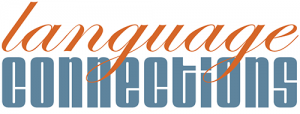Medical Translation is a field in which accuracy and precision are immensely important, as the language is often technical, very particular, and maybe vital to a patient’s health.
Medical Translation Skill Requirements

Translating medical terminology and jargon becomes even more complex with the emergence of new diseases and therapies. As new global epidemics continue to challenge the field of medicine, such as Zika and Ebola, they create a greater need for multilingual translation. However, since medical terminology is so broad, it’s inevitable that issues will occur as translators attempt to create correct and corresponding translations across languages.
Being a translator in the medical industry demands a deep understanding of medical vocabulary in two or more languages. Being bilingual doesn’t necessarily mean that someone will be able to translate medical jargon from one language to another because the terminology is not familiar to those outside of a particular profession. For example, even someone with a background in cardiology may not be adequately fluent in the terminology specific to the field of oncology, especially in another language.
A good medical translator should have the following 3 capabilities:
- Have a comprehensive knowledge and reasoning ability in the medical topic being translated
- Be able to read and understand the source language competently so that he/she understands the intended meaning of a particular text
- Be able to accurately express the meaning of the translation in the target language
All 3 attributes are equally important, as each attribute is closely connected to one another in terms of understanding specific phrasing in different languages. Even if just one of the above mentioned skills is not performed, it will ultimately hinder the translation process.
Medical Translation Comprehension
Translating medical terminology requires several cognitive skills that go hand in hand with communicating messages effectively. Issues may arise if a medical translator uses medical terms and language which can be understood only by those in the specific field of medicine rather than adapting it for the target patient population.
An example of this is when a translator uses the nomeclature or terminology for certain viruses while translating medical documents for a lay audience. For instance, Varicella is the English medical term for chicken pox, but there’s a good chance a patient would not be familiar with this term. As a result, when translating documents into English for medical professionals, a translator should use the term “Varicella”, and use “chicken pox” in a document intended for patients.
This isn’t only exclusive to chicken pox. Detailed below is a sample of medical terms with their simplified meanings that a translator working into English would have to distinguish between, depending on the recipients of the translation:
- Epistaxis: nosebleed
- Lachrymation: excessive flow of tears
- Choledocholithiasis: presence of gallstones in the common bile duct
- Xerosis: dry skin
- Aphthous stomatitis: non-contagious mouth sores
- Xeroderma pigmentosum: high sensitivity to sunlight
Translating Drug Names
Besides translating ailments and diseases, translators can face an array of problems when trying to produce translations of prescription drug names. Brand and generic drugs, for example, can have specific given names helping to identify them in the country in which they are sold.
The World Health Organization, which regulates international public health, assigns various pharmaceutical products an International Nonproprietary Name (INN). An INN is a name given to a generic drug based on its active ingredient. This ultimately helps to reduce confusion when differentiating drug names.
For instance, Ventolin is the trade name for a prescription drug that helps open up airways and medicate asthma sufferers. The INN for this drug is actually “Salbutamol”. This is further complicated in the United States where drugs are also named by their United States Adopted Name (USAN). For Ventolin this happens to be “Albuterol”. Translation of this type of medicine is often needed for writing prescriptions, but knowing the target audience of the prescription is most important.
When translating medical documents for an American doctor, it would be appropriate for a medical translator to use “Albuterol”. On the other hand, a medical translator should use “Salbutamol” when translating a prescription for physicians outside of the United States. Additionally, it is important to know that sometimes drugs are only known by a single name (usually their INN), which must be agreed upon by both of two governing bodies, the United States Adopted Names (USAN) Council and the INN Expert Group.
Understanding generic drug terminology can play a significant role for medical translators who must translate drug names in medical documents intended for both physicians and patients, especially since often patients and physicians recognize a particular prescription drug by a different name. Therefore, the translator must do their part in understanding which audience to tailor their translation.
Translating drug names is an especially difficult task in the field of medical translation, because every year government agencies such as the FDA approve a new list of drugs that can be sold within the U.S. As more drugs receive the green light to be marketed, medical translators have the challenge of adopting terms to accurately translate drug names based on the three options available.
A few examples of some recently FDA approved drugs, with their trade name and their INN in parentheses, are listed below:
- Siliq (brodalumab), treats plaque psoriasis
- Symproic (naldemedine), treats opioid-induced constipation
- Brineura (cerliponase alfa), treats type 2 infantile neuronal ceroid lipofuscinosis
- Ocrevus (ocrelizumab), for multiple sclerosis treatment
- Radicava (edaravone), for ALS treatment
- Kevzara (sarilumab), treats active rheumatoid arthritis
Cultural Context
What many can often overlook is that cultural context also has an influence on medical translation. This is evidenced by certain medical terms that can have dissimilar meanings depending on the country in which they are used. Medical translators therefore have to take cultural context into account; otherwise the meaning of the words they are trying to translate can easily be misconstrued.
Differences in cultural context regarding medical jargon can be found in British and American English.
For instance, the word “surgery” in American English means a procedure that a doctor will perform on a patient. However, “surgery” in British English actually refers to the office hours of a doctor.
The same is true across extremely different languages, and consequently a translator needs to be aware of medical terms with “false friends” in other languages.
False Friends in Medical Translation
When producing medical translations, a non-professional individual attempting to translate the content may be tempted to think that a similar sounding word in a target language is the correct translation of the particular medical term in the source language.
Nevertheless, in many instances that may not be the case. For example, the literal translation of the stomach condition “peptic ulcer” in French is “ulcère peptique”, yet this is not the correct translation of this condition. The correct translation in French is actually “ulcère gastro-duodènal”.
In addition, a translator might think that the proper translation for the French term “anthrax” is the same in English, but in reality the correct English translation would be “carbuncle”. It is the translator’s job to dissociate medical terms from their false friends in another language, in order to produce the most accurate translation possible.
The Future
Medical translation services continue to be an important bridge for people of all nationalities to understand medical terminology. Without the expertise of medical translators, it would be almost impossible for monolingual people to expand their knowledge of global public health issues.
Nowadays as the Internet has become a standard tool to research topics relating to public health, people can also access medical translation companies across the web. Online Medical translation services can help a person understand more about biological and pharmaceutical terminology, and about state of the art medical devices as well.
For inquiries regarding translating medical documents, feel free to reach out to us through our phone number and email listed below!
Learn More About Life Sciences Translation services.
About Language Connections:
Language Connections is one of the top language service companies in the US. Over the last 30 years, we’ve focused on providing the best business translation services, interpreting services, as well as interpreter training and customized language training programs. In addition to top-tier corporate language training, we offer certified corporate interpreters and professional business translation services in 200+ languages. Our network includes linguists with backgrounds in all major industries. They’re ready to meet your needs, whether they’re for technical translation services, legal translation, government translation services, international development translation services, education translation services, life sciences translation, or something else. Reach out to us today for a free quote on our cost-efficient and timely translation services, interpreters, or other linguistic services.
Language Connections Inc.
2001 Beacon Street, Suite 105,
Boston, MA 02135
Phone: +1-617-731-3510
Email: service@languageconnections.com



